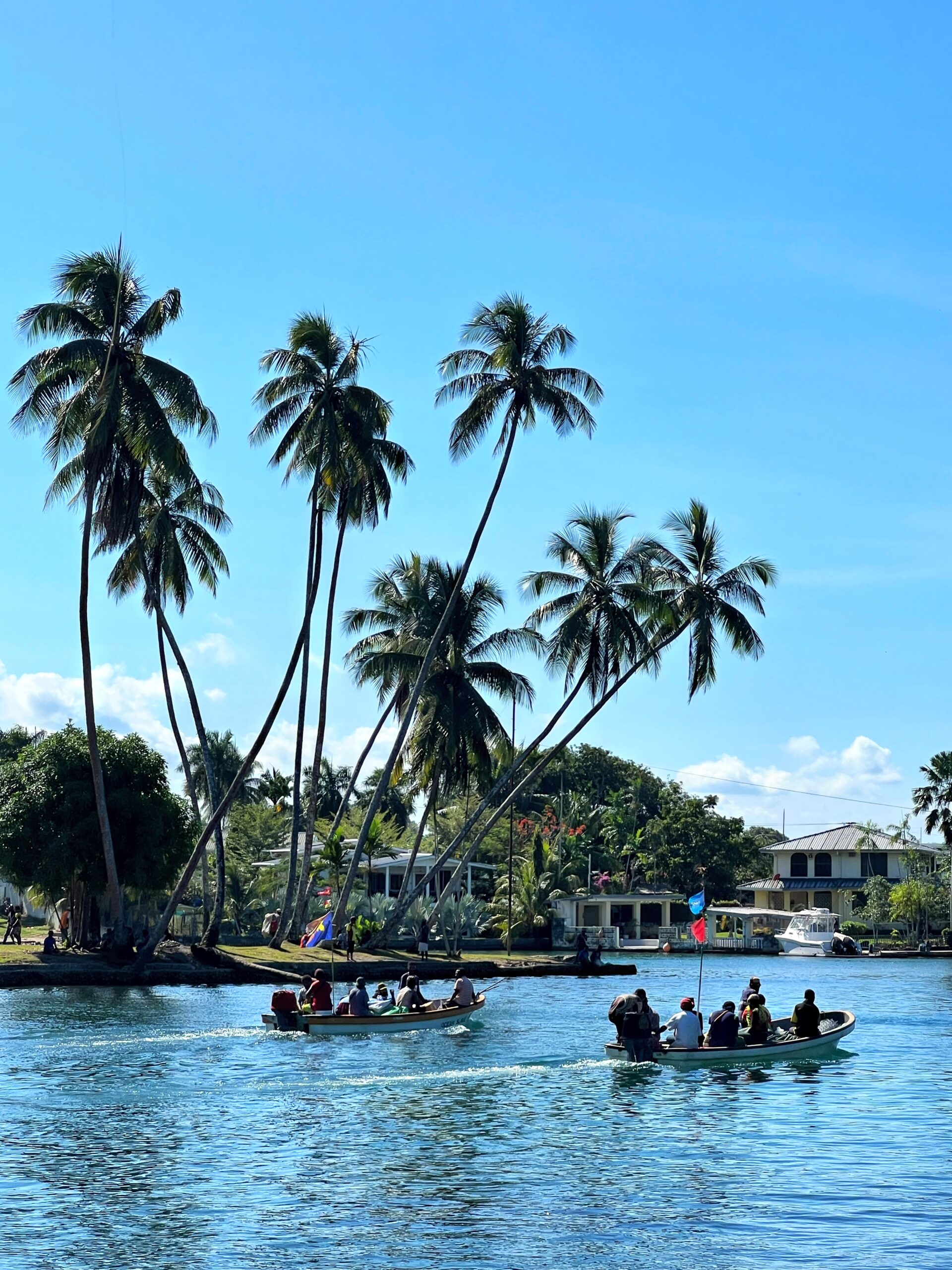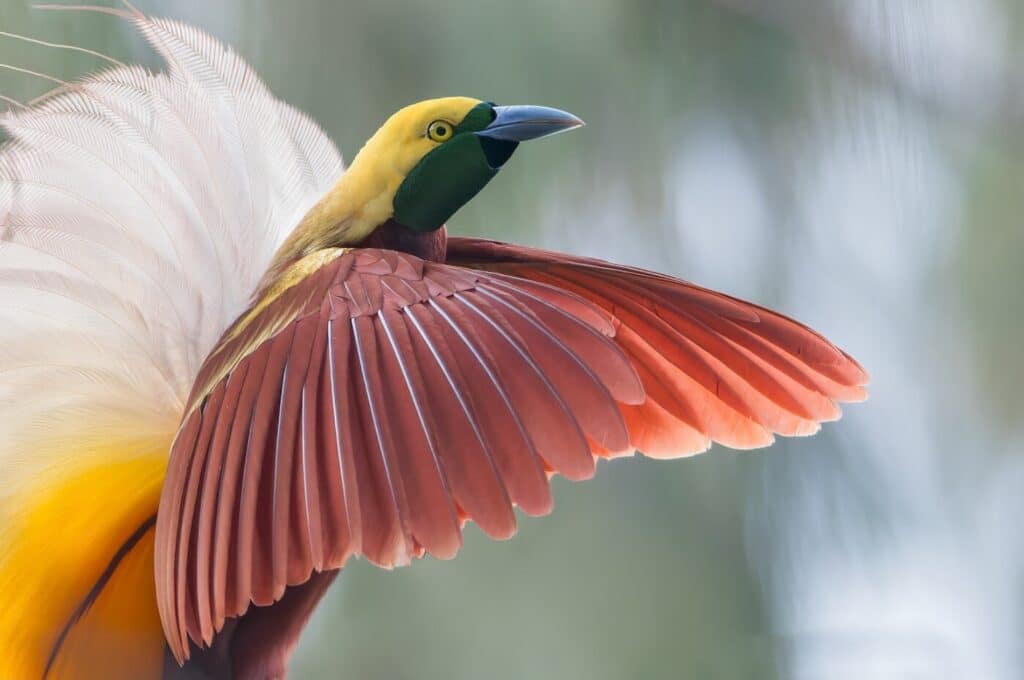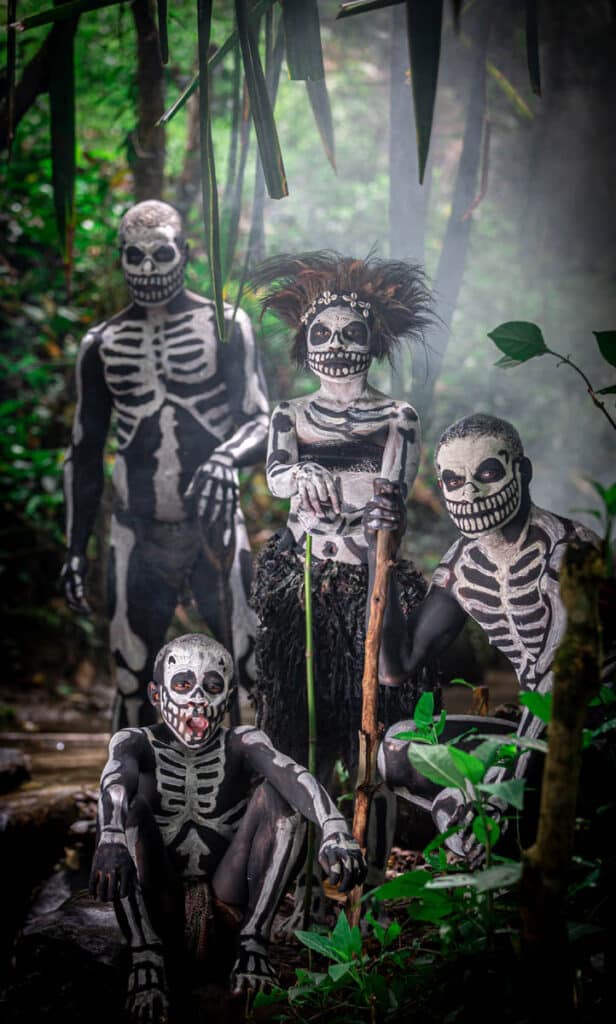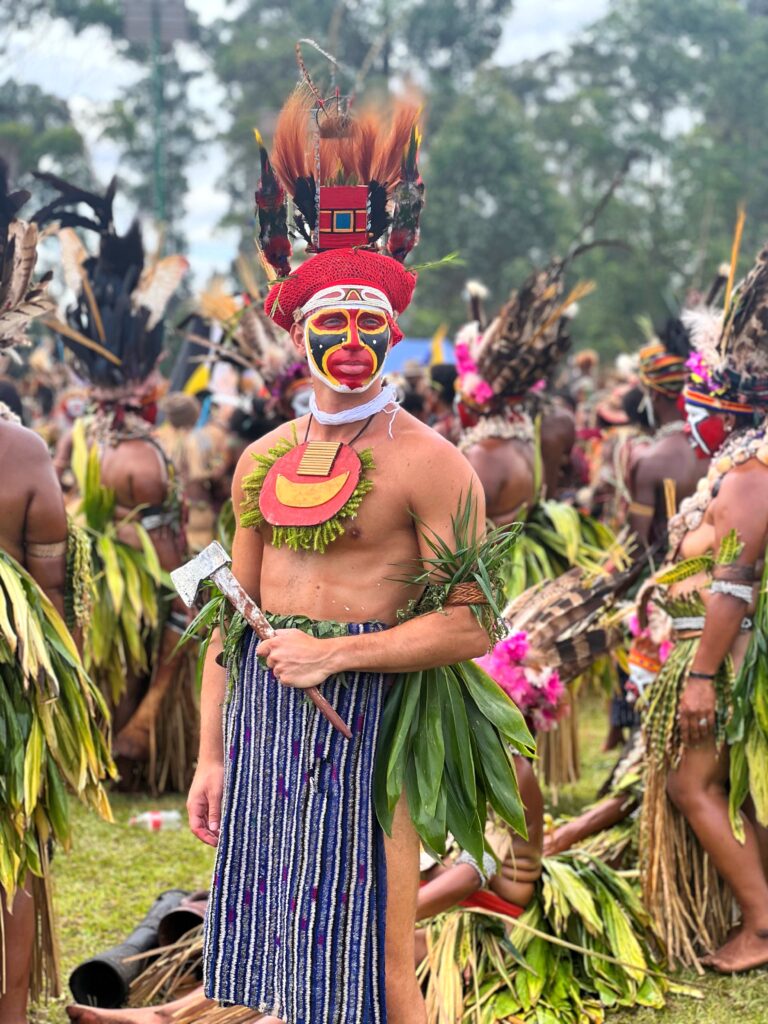Beyond the Myths: A Traveller’s Love Letter to Papua New Guinea

Born with a never-ending thirst for new experiences, I’ve been incredibly fortunate that my jobs have always allowed me to travel the world far and wide. After visiting an astounding 91 countries – ranging from the idyllic islands of the Caribbean to the vast steppes of Kyrgyzstan and the towering glaciers of Alaska – it’s undoubtedly become a bit harder to recapture the thrill of those early backpacking days trip after trip (though that was never really my style, I must admit).
Papua New Guinea, however, was different. I knew it would leave a lasting impression before I even arrived. A dream I started fantasizing about over five years ago, but which had to be put on hold due to personal challenges, has now become true – and it was one I didn’t want to wake up from.
Going back in history, the land of New Guinea was first inhabited by humans at least 60,000 years ago.
The Portuguese and Spanish were likely the first Europeans to sight New Guinea in the early 16th century. In 1526–27, Portuguese explorer Jorge de Menezes discovered the main island, naming it “Papua,” a Malay term for the bushy hair of the locals. The Spaniard Íñigo Ortiz de Retes referred to the island as “New Guinea” in 1545 due to similarities between its inhabitants and those from the African coast of Guinea.
In 1884, a British protectorate was established over the southern coast, known as British New Guinea, which became a colony in 1888. Australian administration began in 1906, with Papua New Guinea gaining independence in 1975. Meanwhile, the western part of the island was annexed by Indonesia in 1969 and remains the Indonesian province of West Papua.
After two nights travelling, my journey started in the picturesque town of Madang, where palm trees sway in the warm breeze, while turquoise waves gently caress the beaches of uninhabited islands. The Madang province served as the backdrop for the 1997 film Robinson Crusoe starring Pierce Brosnan, and it’s not difficult to imagine yourself in one of its scenes as you stroll along the rugged Volcanic coastlines and through the verdant forests of this region.
A few hours’ drive through bumpy roads led me to the Eastern Highlands, where I encountered the first indigenous communities. With over 800 languages spoken among 7,000 different cultural groups, each with their unique customs and traditions, this island in the Pacific is truly an anthropologist’s paradise. And while I’m not an anthropologist myself, my curiosity to learn about the ways of living of local indigenous groups and tribes around the world has grown significantly in the last few years, leading me to explore the renowned Omo Valley in Ethiopia, more recently Namibia, and now finally PNG.


Images Taken By: Francesco Volpe
I arrived in the Asaro village, where I was welcomed with an intriguing yet intimidating performance by the Asaro mudmen, famous for their terrifying look, covered head to toe in mud, wearing gruesome masks and brandishing spears. As they approached, I gradually realized that it was just children and teenagers putting on a show for us, leaving the scarier, more adult versions of themselves for later in my journey across PNG. They showcased their way of life, invited us to try on their heavy clay masks, and took selfies with us.
My journey continued in the Simbu (also written Chimbu) region, home to Mount Wilhelm, the highest mountain in Papua New Guinea and Oceania at 4509m. Here I had the honour to attend a demonstration of the Karim Lek, a courtship ceremony where young people used to meet in the night to sit, share and express love, joy and affection.
Simbu’s provincial capital, Kundiawa, is nestled beside a stunning airstrip perched on a sloping ridge beneath towering mountains. Papua New Guinea is abundant in minerals, oil, fertile soil, forests, and fish. Much of the land is traditionally owned and cultivated by women. In the Highlands, the climate resembles spring year-round across the sheer hills and untouched mountain forests. Unique wildlife can be spotted here, ranging from small tree kangaroos to the impressive Queen Alexandra Birdwing butterflies. PNG is one of the world’s most famous birdwatching destinations, home to numerous birds-of-paradise (the national bird), stunning kingfishers, pigeons, and parrots.

Bird Of Paradise; Image Source: https://pbase.com/dubisha/papua_new_guinea
While in Simbu, I also had the chance to meet the Skeleton Tribe. Their skeleton-inspired getup was originally created to intimidate rival tribes, as death and spirits were deeply feared across Papua New Guinea. The goal was to make their enemies believe they possessed supernatural powers, striking fear with their ghostly appearance. Although nowadays they don’t wear their eerie costumes on a daily basis, they still don them for certain rituals and keep the tradition alive during many of Papua New Guinea’s festivals.
As the Mount Hagen festival approached, excitement built for a private sing-sing held the day before at Paiya Village, about a half-hour drive from town. This event is a photographer’s dream, featuring a stunning natural backdrop. Here, various tribes and folklore groups introduce themselves to tourists, performing in front of a large crowd and posing for pictures. It’s a striking sight to see everyone gathered together: the vibrant colors, lively dances, elaborate feathers, and the crisp yet pleasant sunlight enhance the beauty of the scene. The heartfelt smiles of both the performers and tourists create a magical atmosphere as the latter watch in awe, learning tribal songs and practicing dance steps alongside them.
Established in the 1960s as a peacekeeping initiative, the Mount Hagen Show aimed to promote understanding among warring tribes. Colonial administrators sought to reduce tribal conflicts by encouraging positive forms of competition.

Skeleton Tribe; Image Source: https://tribesofpapuanewguinea.com/the-skeleton-tribe-of-mindima/
Held annually at the Kagamuga Showground in Mount Hagen, the festival showcases traditional dance, performance, and costume, with winners eligible for cash prizes and significant recognition. It attracts over 100 cultural groups from the Western Highlands Province and beyond. This festival, along with similar events, plays a vital role in preserving indigenous languages and cultures, encouraging participation from younger community members and honouring their timeless traditions.
As I attentively watched the joyful and energetic performances the day before the show, I suddenly felt a strong desire to join in. I was too excited to merely sit back and observe. After sharing my enthusiasm, my guide made it happen.
Around 8 o’ clock on show day, I was taken to the grassy fields outside the Mt. Hagen Showgrounds, joining clusters of people gathered around jars of body paint and suitcases brimming with valuable feathers. As I started adorning my costume, the chief of the Nenga Tribe came to meet me, expressing his pride in having a visitor wanting to take part in the celebrations. Another member of the tribe started applying makeup to my face with great care, while at least 30 to 40 people gathered around, offering tips on how to enhance my makeup and embellish my costume. Many of them were children, watching what must have seemed like a fascinating spectacle as this pale man, who didn’t speak their language, tried to resemble them.
As I made my way to the Showground, the chief of the tribe took my hand, and we began to sing one of the traditional songs I had learned the day before. Passers-by smiled, complimenting me and expressing their pride in seeing a foreigner representing their culture. It was a moment I will never forget. One of the organizers joked that I was now ready to marry the daughter of the village chief!
As I joined the rest of my tribe, I was now part of them. I danced throughout the day, trying to keep my steps in time and my makeup intact! Let me tell you, removing all that makeup was no easy task.


Francesco Volpe Getting Ready for the Mount Hagen Show; Image Source: Francesco Volpe
This experience was undoubtedly the highlight of an unforgettable trip. I had never felt more connected to the culture I was visiting. Despite our different backgrounds, the genuine smiles on their faces – or may I say, the bright red smiles, courtesy of their betel nut chewing habit, which acts as a stimulant and suppresses appetite – made me feel right at home.
My choice of destination certainly appeared extravagant to many, as PNG remains relatively under-visited by tourists, largely due to safety concerns stemming from its reputation as a dangerous place. However, much of this perception is perpetuated by those who have never actually visited. In reality, people are friendly and welcoming, and most Papua New Guineans look out for foreigners.
My journey through Papua New Guinea was nothing short of transformative. This stunning destination, often overshadowed by misconceptions of danger, opened my eyes to a world rich in culture, history, and natural beauty. From the warmth of the locals to the vibrant festivals and ancient traditions, every moment was a celebration of life. The experiences I shared with the indigenous communities, particularly during the Mount Hagen festival, not only deepened my appreciation for their heritage but also reinforced the idea that travel is about connection and understanding. PNG may not be the most conventional tourist spot, but for those willing to embrace its uniqueness, it promises memories that last a lifetime. I returned home not just with stories, but with a profound respect for a place that taught me the true meaning of hospitality and the beauty of cultural diversity.



